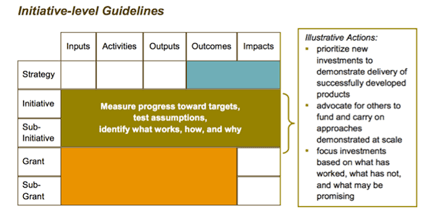For modern nonprofit organizations, access to big data has opened the door to smarter decision-making and new models for collaboration. Databases that once resided in physical, back-office servers are now in the cloud, allowing organizations to capture even more information about their impact, fundraising, and expenses. As a result, the dynamics of nonprofit management is evolving to adapt to more uses of technology. Organizations can now electronically track progress on programs against objectives and budgets. They can now objectively evaluate approaches using actual data, and then vet for scalability. A new rule for nonprofits is beginning to emerge: Either leverage technology to achieve maximum efficiency, or risk failure.
The pressure to use big data, open data, (such as Data.gov), user-generated data (from platforms such as Twitter), and other technology-based approaches to improve organizational process doesn’t just come from a fear of failure. Nonprofits face a growing demand to measure performance and provide tangible evidence of positive impact from a whole host of individuals, donors, partners, and media.
Given these trends, how can nonprofits leverage cloud technology, and begin transforming their monitoring and evaluation efforts to support the ever-growing demand for measurable impact? I dealt with a similar challenge as an executive at Citibank, where I had to prove that the activities of our organization were meaningful. Part of this, of course, was translating the benefits of our division’s work into “the language of business”; we used a variety of tools to carefully track the margin impact of each project in our portfolio, which we could then transparently share with senior management.
Here are three basic tool types that I believe can help organizations share progress with their funders and beneficiaries.
Type 1: Outcome Trackers
Are you enjoying this article? Read more like this, plus SSIR's full archive of content, when you subscribe.
According to the Bill & Melinda Gates Foundation's Guide to Actionable Measurement, the best approach to monitoring and evaluation is to measure execution (inputs, activities, outputs) and change (outcomes, impacts) at a mix of program and strategy levels. (See chart below.) The latter is important because outcomes are “the intermediate observations” directly linked to specific initiatives that—when examined independently or in combination with other initiatives—can feed into broader, strategy-level impact points.
 (Image courtesy of the Bill & Melinda Gates Foundation)
(Image courtesy of the Bill & Melinda Gates Foundation)
The challenge is to find an efficient and effective way to do this kind of measurement, using tools that work with your organization's structure and theory of change. Whatever tools you choose, they should help you easily identify outcomes, share across initiative levels, and link transparently to specific investments. Look for ones that monitor and track program activities and progress, and that can notify your team when programs are underperforming against their objectives; this will help create a learning environment and assist in managing programs and keeping them flexible (in case it’s necessary to change your approach).
At Citibank, I needed to develop my own tools and approaches—luckily, there are now some great commercially available solutions. Two that I’ve found particularly helpful are Strengthening Nonprofits: A Capacity Builder’s Resource Library, which includes a collection of e-Learning and guidebooks dedicated to measuring outcomes, and Newdea Outpath, a free collection of resources and collaboration opportunities for creating impact action plans.
Type 2: Collaboration Catalysts
Transparency and organization are important to any successful team, but many nonprofits operate in a multitude of geographies (sometimes in isolated corners of the world, and often with teams split between headquarters and the field), making strong communication and collaboration difficult. More collaboration generally equates to more efficiency and enhanced chances for success, so finding a tool to help facilitate interaction can be a huge game changer for organizational outcomes.
Over the past five years, the availability of affordable online project management tools has increased significantly. Basecamp—used by both public and private sector organizations—is one I worked with at NetHope, and it nicely integrates email into workflows. For nonprofits that have US 501(c)(3) or equivalent status, Citrix recently announced that it will offer qualifying organizations a free version of its Podio project management tool, which offers interactive Gantt charts. Another one to look at is Zoho Projects, which offers integrations with Google Docs and Dropbox.
Type 3: Data on Dollars
In the past, it may have seemed strange to talk about running a nonprofit like a business, but today the various forms of return on investment (ROI) are just as important to the social sector as they are to the private sector. Customer relationship management (CRM) systems offer a way to aggregate financial data from donations, fundraising, and operations—the first step in effectively calculating ROI. Using a CRM system to maintain contact information, track interactions, trigger follow-ups, and keep meeting notes has been vital to building important relationships in my own work.
Your organization may consider Salesforce, given its track record of success in the corporate world, but don't be quick to rule out CRMs designed specifically for nonprofits, such as NeonCRM. If you want a totally customizable option, also look into Sumac, which allows you to add options to the basic CRM offering or even create entirely unique fields for specific needs.
A closing thought
These and other new tools can help organizations leverage technology to do more efficient and evidence-driven work within the changing social service sector. My advice is to start with these three types and experiment with what works best in your environment.
Support SSIR’s coverage of cross-sector solutions to global challenges.
Help us further the reach of innovative ideas. Donate today.
Read more stories by William A. Brindley.

